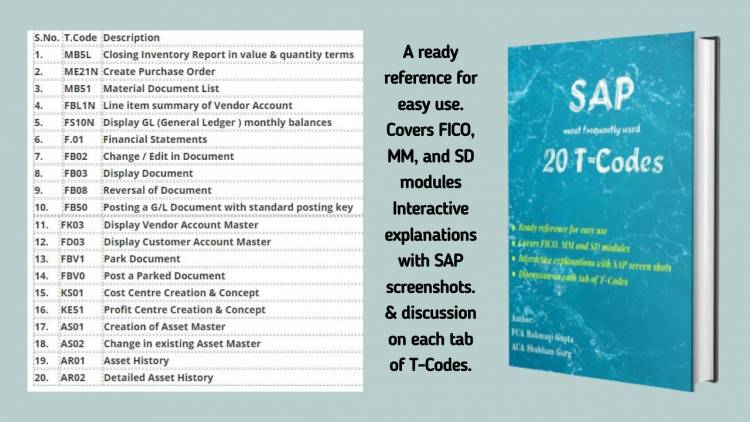Ind AS 1 Presentation of Financial Statements (Disclosures Checklist)
Ind AS 1, Presentation of Financial Statements
- When financial statements comply with Ind AS, disclosure by way of an explicit and unreserved statement of such compliance in the notes.
- Additional disclosures when compliance with the specific requirements in Ind ASs is insufficient to enable users to understand the impact of particular transactions, other events and conditions on the entity’s financial position and financial performance.
- In the extremely rare circumstances in which management concludes that compliance with a requirement in an Ind AS would be so misleading that it would conflict with the objective of financial statements set out in the Framework, the entity shall departs from that requirement if the relevant regulatory framework requires, or otherwise does not prohibit, such a departure), and it shall disclosure that:
- management has concluded that the financial statements present a true and fair view of the entity’s financial position, financial performance and cash flows;
- it has complied with applicable Ind ASs, except that it has departed from a particular requirement to present a true and fair view;
- the title of the Ind AS from which the entity has departed, the nature of the departure, including the treatment that the Ind AS would require, the reason why that treatment would be so misleading in the circumstances that it would conflict with the objective of financial statements set out in the Framework, and the treatment adopted; and
- for each period presented, the financial effect of the departure on each item in the financial statements that would have been reported in complying with the requirement.
- In case entity departed from a requirement of an Ind AS in a prior period, and that departure affects the amounts recognized in the financial statements for the current period, disclosures set out in paragraph 1.20 (c) and 1.20 (d).
- When management is aware of material uncertainties related to events or conditions that may cast significant doubt upon the entity’s ability to continue as a going concern but going concern concluded to be valid and financial statements are prepared on a going concern basis, disclosure of those uncertainties. When financial statement are not prepared on going concern basis, disclosure of that fact, together with basis on which entity it prepared financial statements and the reason why the entity is not regarded as a going concern.
- Disclosure of significant accounting policies comprising:
- the measurement basis (or bases) used in preparing the financial statements; and
- the other accounting policies used that are relevant to an understanding of the financial statements.
- Aa Disclosure of each significant accounting policy that is not specifically required by Ind ASs but the entity selects and applies in accordance with Ind AS 8. (An accounting policy may be significant because of the nature of the entity’s operations even if amounts for current and prior periods are not material.)
- Disclosure of, along with its significant accounting policies or other notes, the judgements, apart from those involving estimations, (see paragraph 1.125) made by management in the process of applying the entity’s accounting policies and that have the most significant effect on the amounts recognized in the financial statements.
- Disclosure of information about the assumptions made about the future, and other major sources of estimation uncertainty at the end of the reporting period, that have a significant risk of resulting in a material adjustment to the carrying amounts of assets and liabilities within the next financial year. The notes shall include details of:
- their nature, and
- their carrying amount as at the end of the reporting period.
- If it is impracticable to disclose the extent of the possible effects of an assumption or another source of estimation uncertainty at the end of the reporting period, disclosures that it is reasonably possible, on the basis of existing knowledge, that outcomes within the next financial year that are different from the assumption could require a material adjustment to the carrying amount of the asset or liability affected.
In all cases, disclosure of the nature and carrying amount of the specific asset or liability (or class of assets or liabilities) affected by the assumption.
- Disclosure of the following information to enables users of its financial statements to evaluate the entity’s objectives, policies and processes for managing capital:
- qualitative information about its objectives, policies and processes for managing capital, including:
-
- a description of what it manages as capital;
- when an entity is subject to externally imposed capital requirements, the nature of those requirements and how those requirements are incorporated into the management of capital; and
- how it is meeting its objectives for managing capital.
-
- summary quantitative data about what it manages as capital. Some entities regard some financial liabilities (eg some forms of subordinated debt) as part of capital. Other entities regard capital as excluding some components of equity (eg components arising from cash flow hedges).
- any changes in (a) and (b) from the previous period.
- whether during the period it complied with any externally imposed capital requirements to which it is subject.
when the entity has not complied with such externally imposed capital requirements, the consequences of such non-compliance.
- Disclosure of information separately for each capital requirement to which the entity is subject, when an aggregate disclosure of capital requirements and how capital is managed would not provide useful information or distorts a financial statement user’s understanding of an entity’s capital resources.
- For puttable financial instruments classified as equity instruments, disclosure of (to the extent not disclosed elsewhere):
- summary quantitative data about the amount classified as equity;
- its objectives, policies and processes for managing its obligation to repurchase or redeem the instruments when required to do so by the instrument holders, including any changes from the previous period;
- the expected cash outflow on redemption or repurchase of that class of financial instruments; and
- information about how the expected cash outflow on redemption or repurchase was determined.
- Disclosure in the notes:
- the amount of dividends proposed or declared before the financial statements were approved for issue but not recognized as a distribution to owners during the period, and the related amount per share; and
- the amount of any cumulative preference dividends not recognized
- Disclosure of the following, if not disclosed elsewhere in information published with the financial statements:
- the domicile and legal form of the entity, its country of incorporation and the address of its registered office (or principal place of business, if different from the registered office);
- a description of the nature of the entity’s operations and its principal activities;
- the name of the parent and the ultimate parent of the group; and
- if it is a limited life entity, information regarding the length of its life.
Source :- ICAI compiler by Ind AS Board
 Download APP
Download APP









































